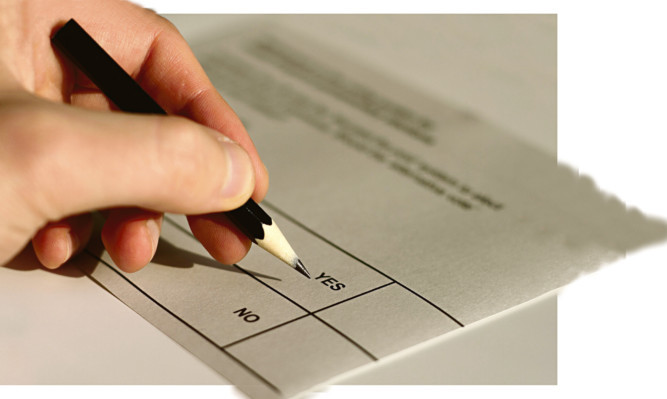
The Yes camp is desperate for the ‘grey vote’ but surveys suggest pensioners are not being won over.
Scotland’s one million pensioners are still resolutely opposed to independence despite a huge shift to Yes among younger voters.
Support for breaking up the UK is running at record levels in some age groups. But an analysis of all the polls carried out by YouGov in the last year has revealed over-60s have stayed consistent in their support for retaining the Union.
On average, 60% of respondents have said they will vote No. The latest survey put the figure at 63%. Both Yes and No camps are prioritising the “grey vote” as the independence battle goes right to the wire.
Last week Better Together ordered the canvassing of 100,000 pensioners with the results, according to insiders, showing 69% are going to vote No and the rest backing Yes.
Yes Scotland hit back with a direct mail letter to every pensioner in the country as part of a huge effort to turn the situation around.
They also tasked young independence supporters to persuade their grandparents to back them by putting their cross in the Yes box.
Rachel Ormston, of Scotcen Social Research, said pensioners consistently say they are certain to vote and previous electoral data shows they keep their word.
She said: “This age group is crucial to Better Together. If the No side is going to win they will need the over-60s to turn out.”
Scotcen crunches the numbers from social attitudes surveys. Ormston explained why pensioners are more likely to vote No.
She said: “They generally feel more British. The social attitudes survey asks people to rate how British they feel on a scale of one to seven, with seven being the most British. Just 12% of people under 40 say they feel seven out of seven British, that figure is 34% among over-65s.
“We can’t say with any certainty why older people feel more British. It may be they have memories of the war or their parents did or it may be that they lived more of their lives in the days before devolution.”
Ormston also explains why the over-60s are also more likely to vote.
She said: “Historically, the older age groups are most likely to vote. That may not be the case this time around with a high turnout predicted in all age groups. They do seem to have a sense of duty to vote.”
The Yes camp are clearly aware of how important older people will be in determining the outcome on Thursday. A poll last week found the Yes campaign had been targeting over-60s more than any other with leaflets, door knocks and phone calls.
Spokesman Graeme Sneddon said: “With just four days before the referendum, we are asking each of our followers to take a break, and reach out to older family members and loved ones.”
But they’ll have their work cut out. The same poll found 57% of older people are convinced independence will leave them worse off.
That chimes with the results of a Sunday Post survey last month that saw 72% of over-60s say they are worried their pensions could suffer if Scotland votes to separate from the UK.
The other problem for the Yes campaign is that very few at the older end of the demographic scale are still to make up their mind.
Dr Jan Eichhorn, of the University of Edinburgh, said: “There’s not many people left in that age group that either side can get now. And if the Yes camp does try to attract them with some amazing policy for pensions it will not look credible and be treated as critically.”
And he explained why older voters are more likely to back Better Together.
He said: “There’s a degree of caution. People in old age are more risk-averse and changing the status quo is seen as a greater risk.”
Voter turnout among the over-60s could reach as high as 90%. If that means it’s a No vote on Thursday both experts have warned there may be consequences.
Dr Eichhorn said: “I’m sure if it’s No, some from the Yes side will try to blame older people, though I don’t think that will have much traction.”
Rachel Ormston, however, says such a scenario could see nationalists demanding another referendum within a few years on the basis that it was only the older generation that blocked it this time around.

Enjoy the convenience of having The Sunday Post delivered as a digital ePaper straight to your smartphone, tablet or computer.
Subscribe for only £5.49 a month and enjoy all the benefits of the printed paper as a digital replica.
Subscribe